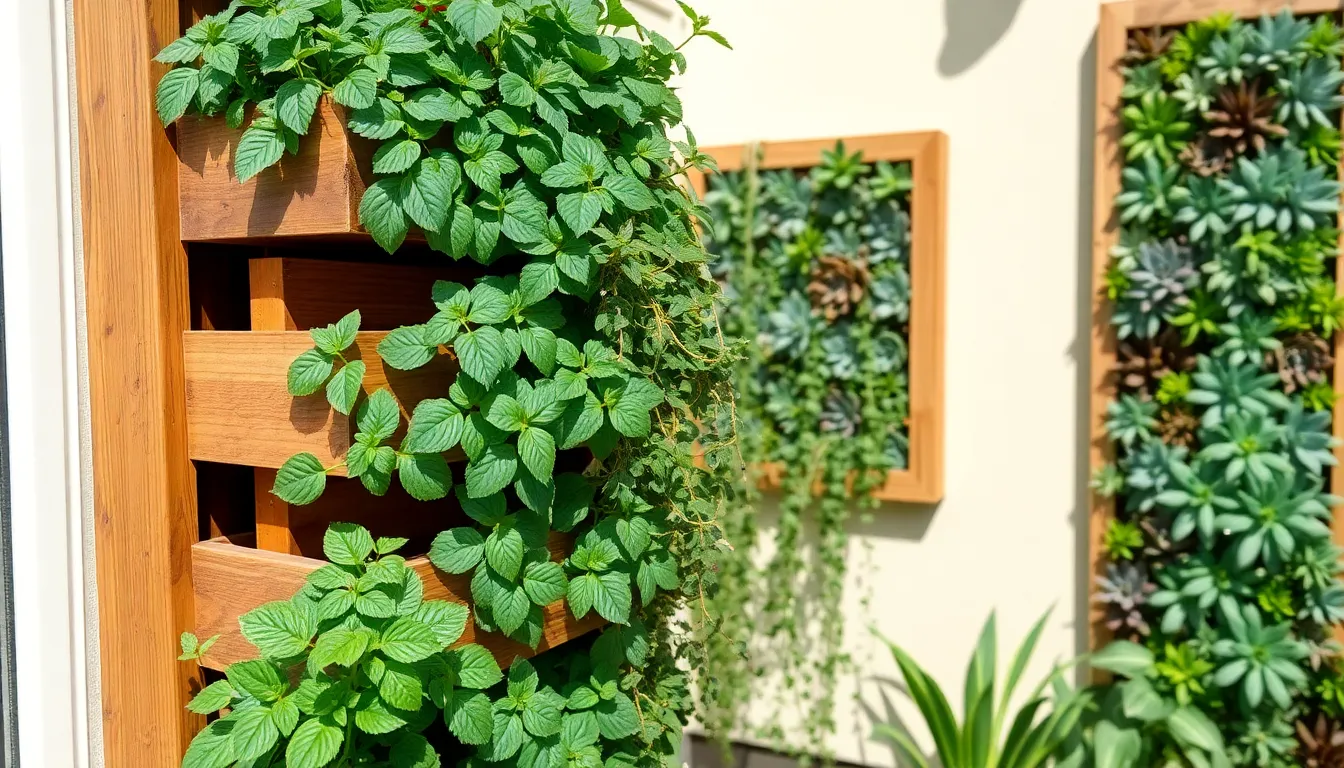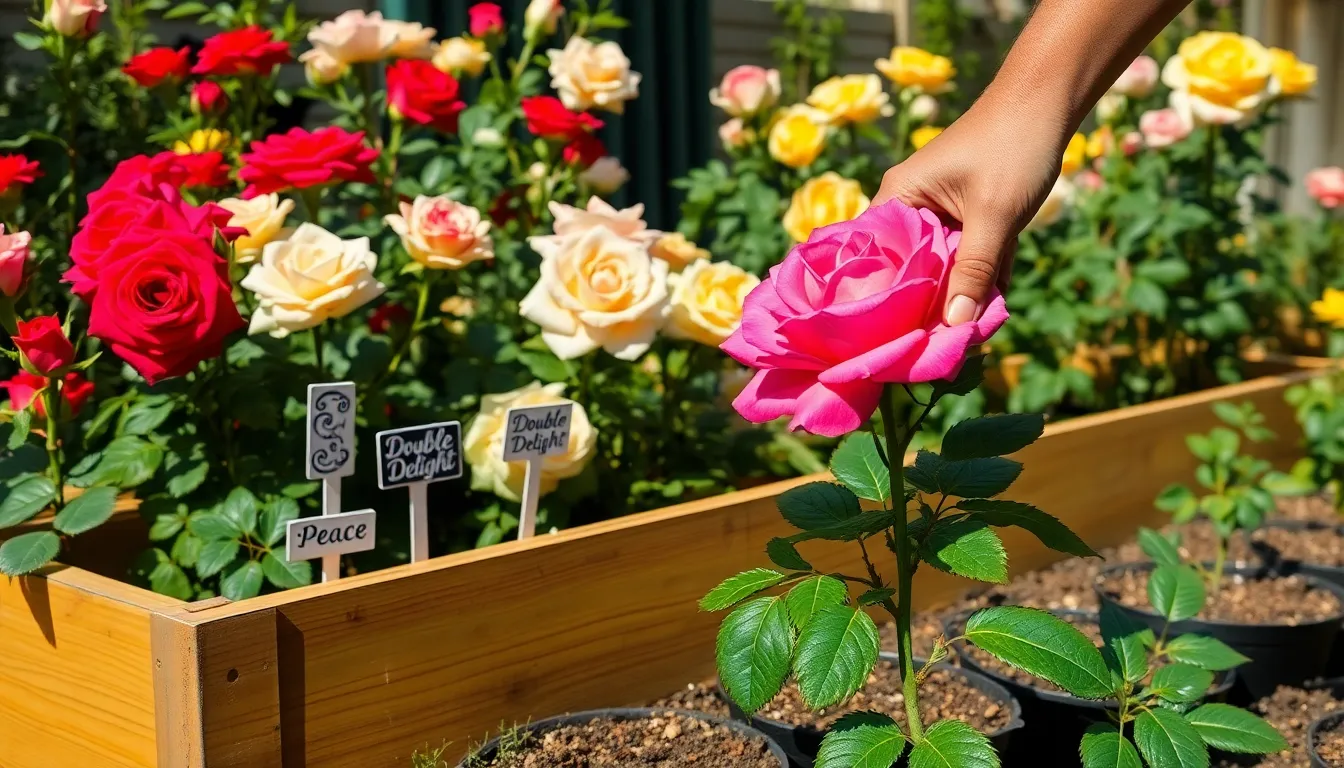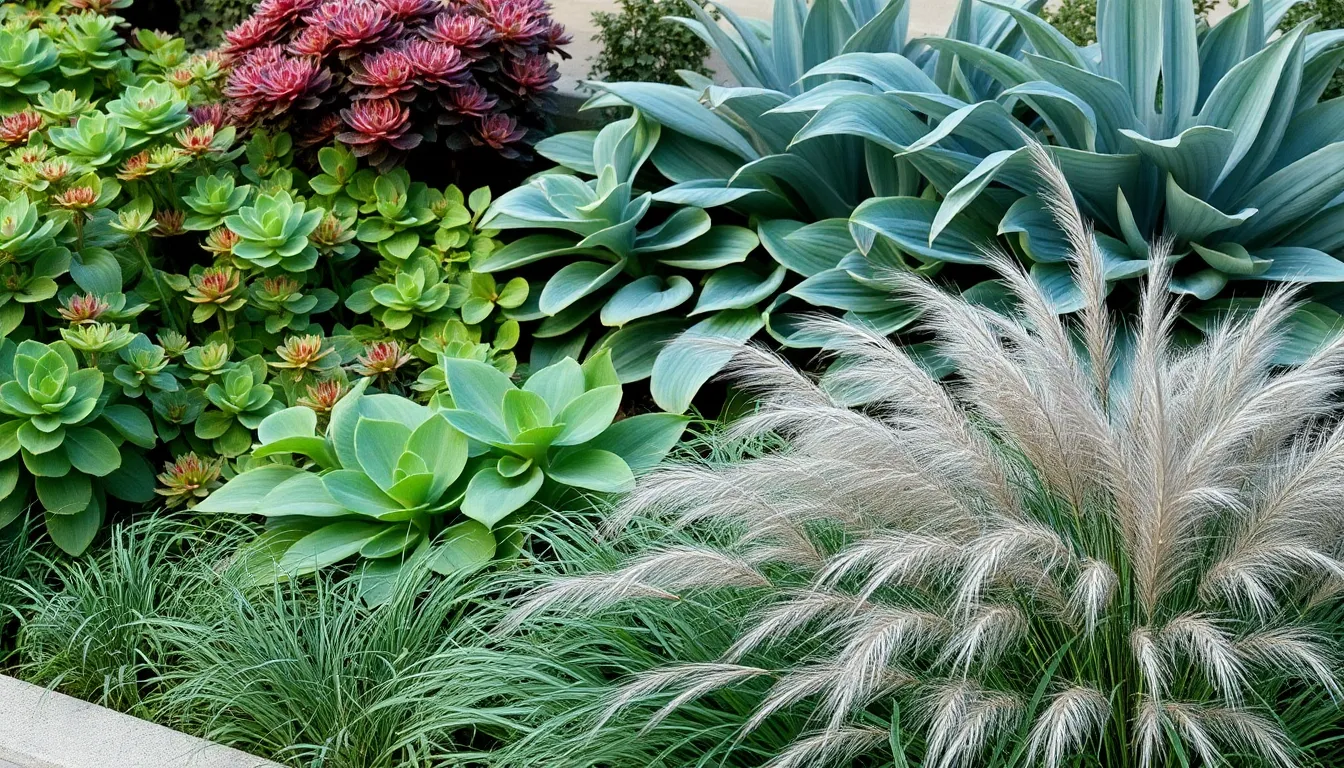Imagine stepping into your backyard, balcony, or even just a windowsill, and being greeted by a vibrant, thriving oasis, all within the confines of a limited space. Whether you’re a beginner just getting your hands dirty or a seasoned gardener looking to maximize every inch, “10 Creative Garden Ideas for Limited Spaces” is your ticket to transforming small areas into lush retreats. With these innovative ideas, you’ll discover how to turn constraints into opportunities, bringing the joy and satisfaction of gardening to spaces of any size.
In this guide, we’ll explore practical techniques that promise not only to beautify your surroundings but also to enhance your gardening skills. From vertical gardens to container masterpieces, each idea is designed to inspire confidence and creativity, ensuring that every gardener, regardless of their experience level, can achieve success. Let the adventure of small-space gardening begin as you unlock the rewards of nurturing life in even the tiniest of places, proving that when it comes to gardening, limitations are merely the stepping stones to something extraordinary.
Utilize Vertical Plant Walls
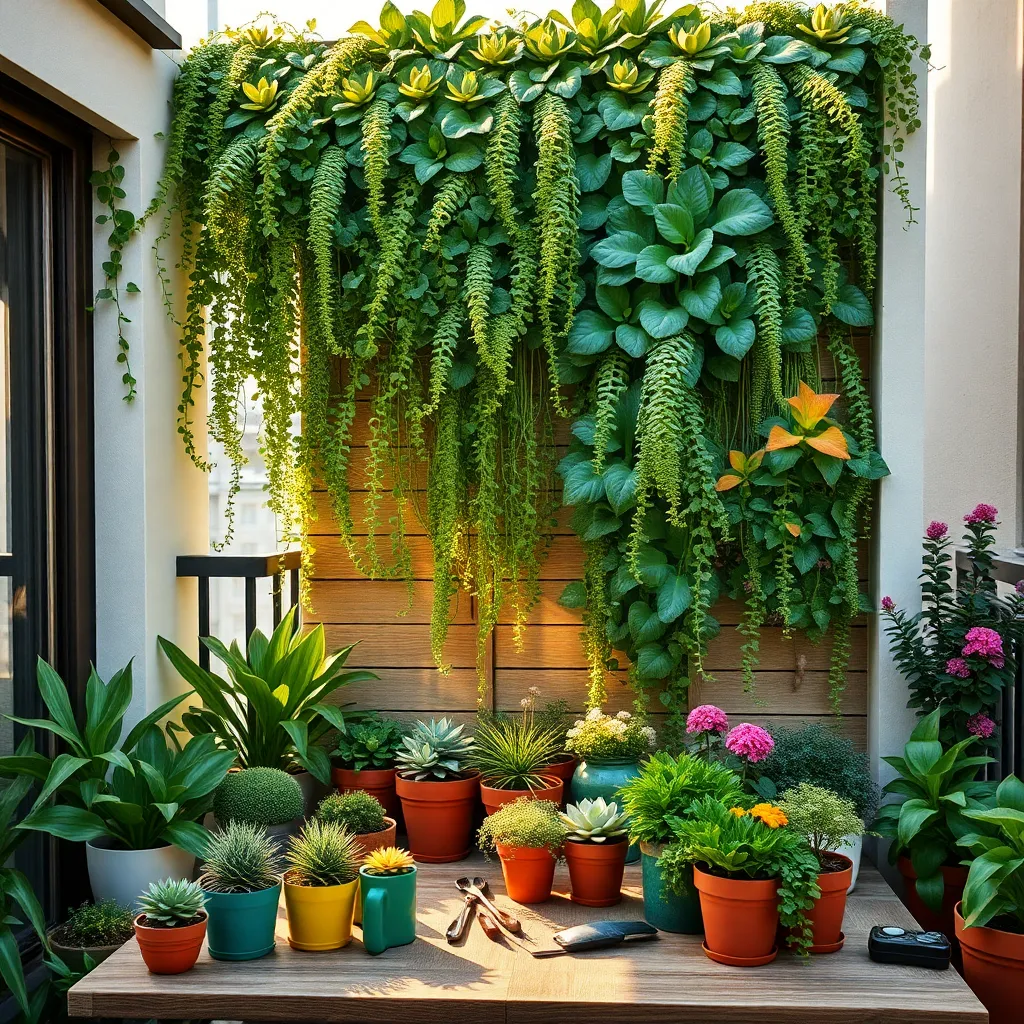
Vertical plant walls are a fantastic way to maximize limited space while adding a lush, green aesthetic to your garden. They allow you to grow a variety of plants vertically, making use of walls, fences, or specially designed structures.
Begin by selecting plants that thrive in vertical arrangements, such as ferns, ivy, or succulents. These plants typically require well-draining soil and should be placed in a location where they receive adequate light, depending on their specific needs.
For beginners, starting with a simple vertical wall kit can make the process more manageable. Ensure you choose a system that includes self-watering features or plan to water manually, taking care to avoid overwatering, which can be a common issue.
Advanced gardeners might experiment with incorporating herbs or vegetables into their vertical walls. Plants like lettuce, strawberries, or even cherry tomatoes can thrive in these settings with the right care, such as frequent watering and nutrient-rich soil.
Hang Planters to Save Floor Space
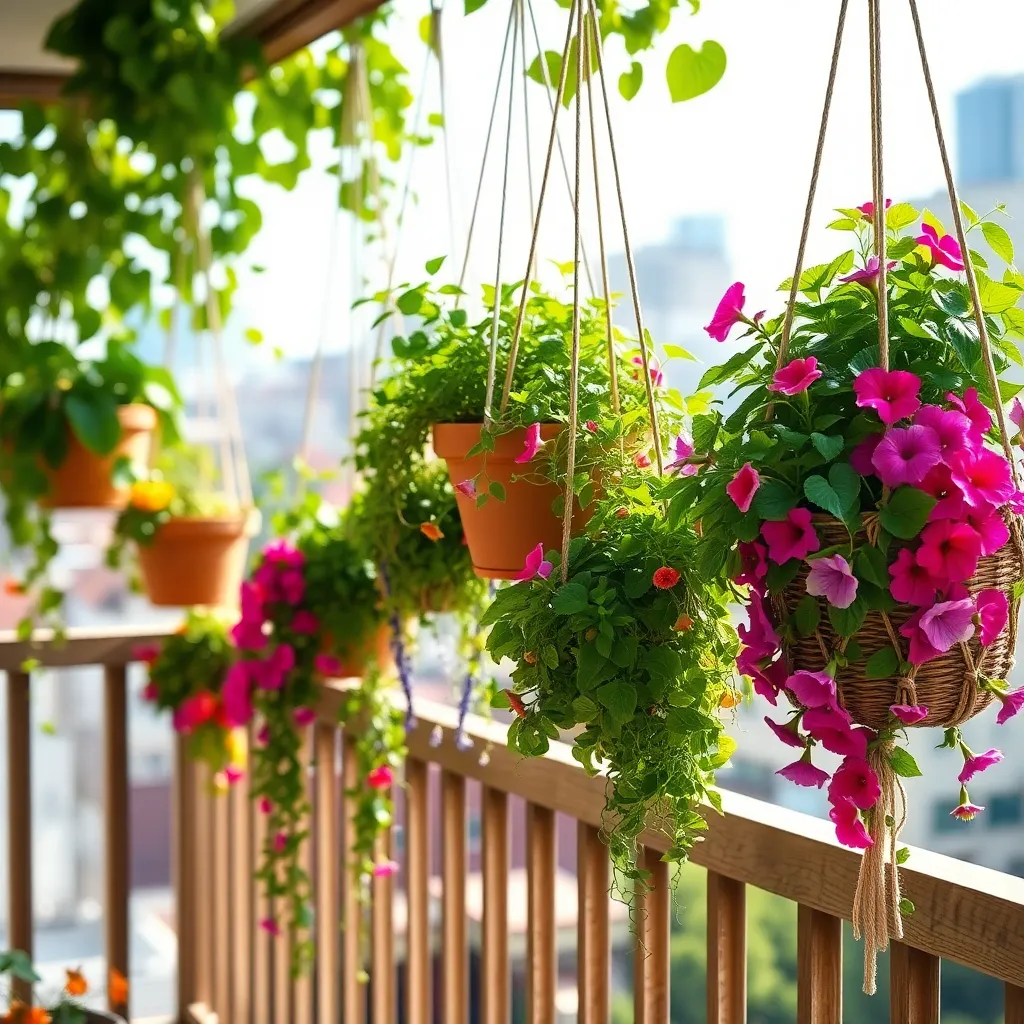
Hanging planters are an excellent way to maximize space, especially in compact gardens where every inch counts. By elevating your plants, you save floor space and add a dynamic visual element to your garden design.
To get started, choose lightweight pots to ensure your hangers can support them without strain. Materials like coconut coir or plastic are ideal, as they are durable yet light, preventing unnecessary weight on your structures.
Select plants that thrive in hanging conditions, such as pothos, ivy, or trailing succulents. These plants not only adapt well to hanging environments but also create a lush, cascading effect that enhances the aesthetic appeal of your garden.
Ensure your hanging plants receive adequate sunlight by placing them in areas where they can bask in filtered light. Regularly check the moisture level of the soil, as hanging plants tend to dry out faster than those on the ground, requiring more frequent watering.
Incorporate Stackable Garden Beds
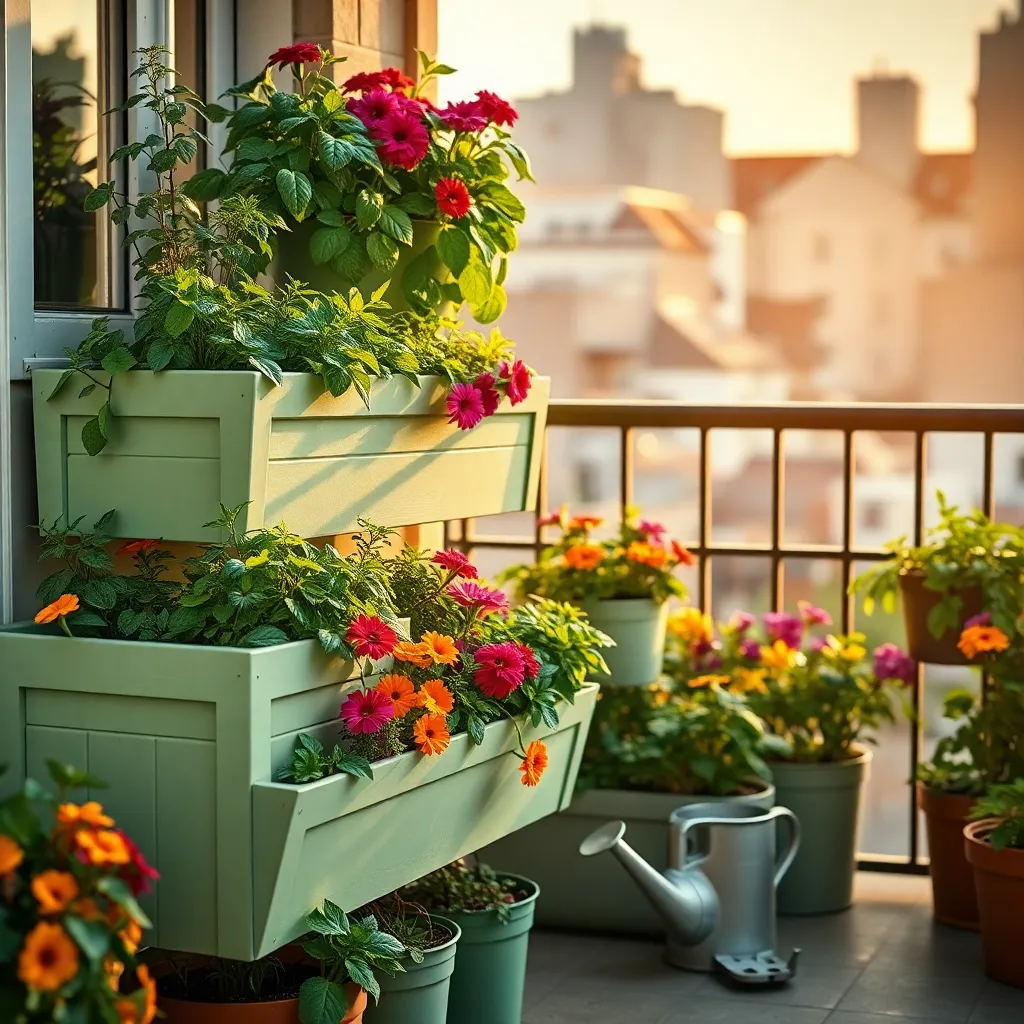
Stackable garden beds are an excellent solution for maximizing space in small areas. They allow you to grow a variety of plants vertically, making efficient use of limited ground space.
For beginners, start by selecting stackable beds made of durable, weather-resistant materials like cedar or recycled plastic. These materials ensure longevity and require minimal maintenance, making them ideal for gardening enthusiasts who are just starting out.
To ensure healthy plant growth, fill the beds with a high-quality potting mix that retains moisture while allowing proper drainage. A mix containing peat, perlite, and compost is ideal for a wide range of plants, ensuring they receive the nutrients needed for vigorous growth.
When planting, consider the sunlight requirements of your chosen plants, as stackable beds can create different light conditions at each level. Place sun-loving plants like tomatoes and peppers in the top tiers, while shade-tolerant plants such as lettuce and spinach can thrive in lower levels.
Advanced gardeners can experiment with companion planting, using stackable beds to maximize plant interactions. For example, planting basil alongside tomatoes can enhance growth and flavor, while also repelling pests naturally.
Watering is crucial for success, especially in vertical setups where moisture can evaporate quickly. Ensure each layer receives adequate water by installing a drip irrigation system or watering each level individually to maintain consistent soil moisture.
Grow Herbs in Window Boxes
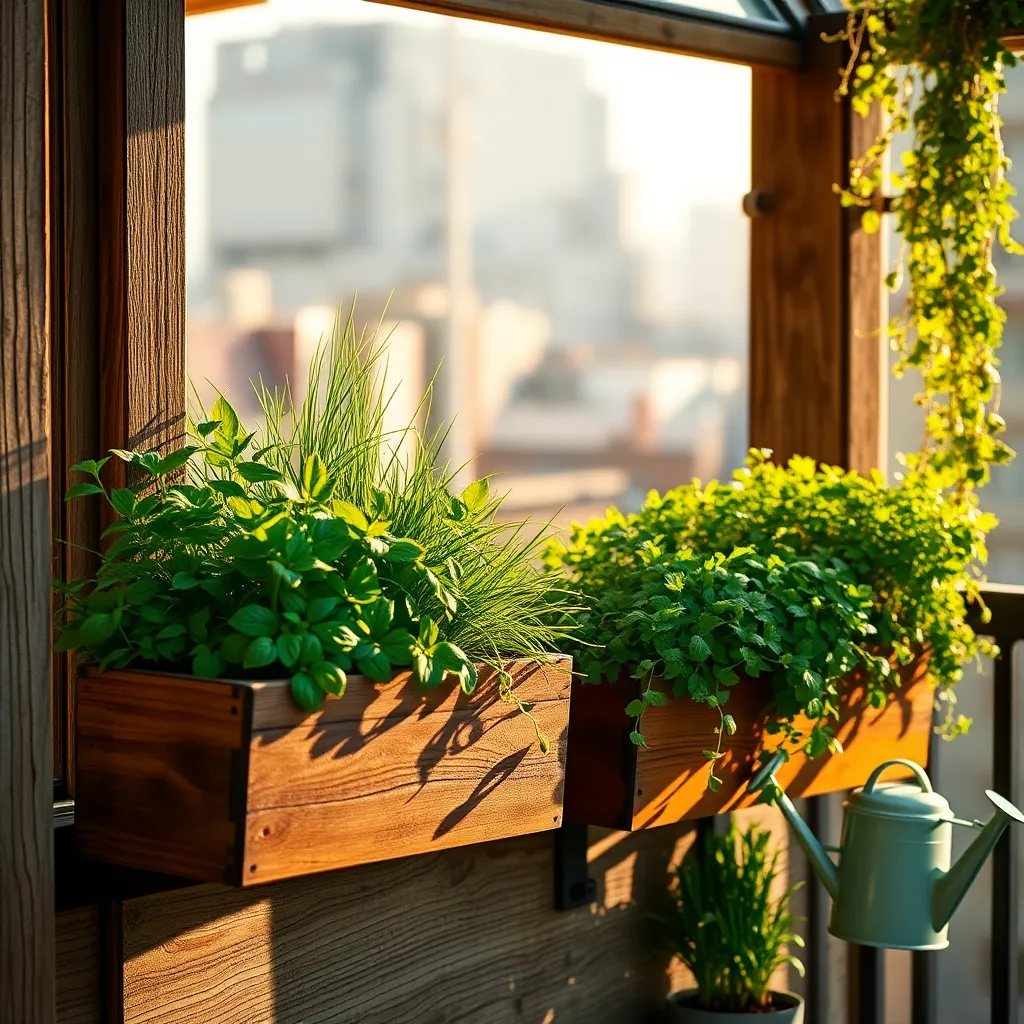
Growing herbs in window boxes is an excellent solution for gardeners dealing with limited space. By placing these boxes on sunny windowsills, you can cultivate a variety of herbs right in your kitchen, making fresh ingredients always within arm’s reach.
Start by selecting herbs that thrive in smaller containers such as basil, parsley, or thyme. Ensure your window box has adequate drainage holes to prevent waterlogging, which can be detrimental to herb roots.
Use a high-quality potting mix that retains moisture but also drains well. Mixing in a bit of perlite can improve aeration and drainage, which is especially important for herbs like rosemary that dislike soggy soil.
Water your herbs regularly, but be cautious not to overwater. A general rule is to water when the top inch of soil feels dry, but consider the specific needs of each herb, as some may require slightly more or less moisture.
For beginners, start with easy-to-grow herbs like mint or chives, which are forgiving and resilient. Advanced gardeners might experiment with cilantro or dill, which can be more challenging due to their sensitivity to temperature changes.
Consider rotating your window box occasionally to ensure even sunlight exposure for all plants. Additionally, regular pruning encourages bushier growth and prevents herbs from becoming leggy.
With these tips, your window box can become a thriving mini herb garden, enhancing both your living space and your culinary creations. Don’t hesitate to experiment with different herb combinations to find what works best for you and your kitchen needs.
Create a Balcony Herb Spiral
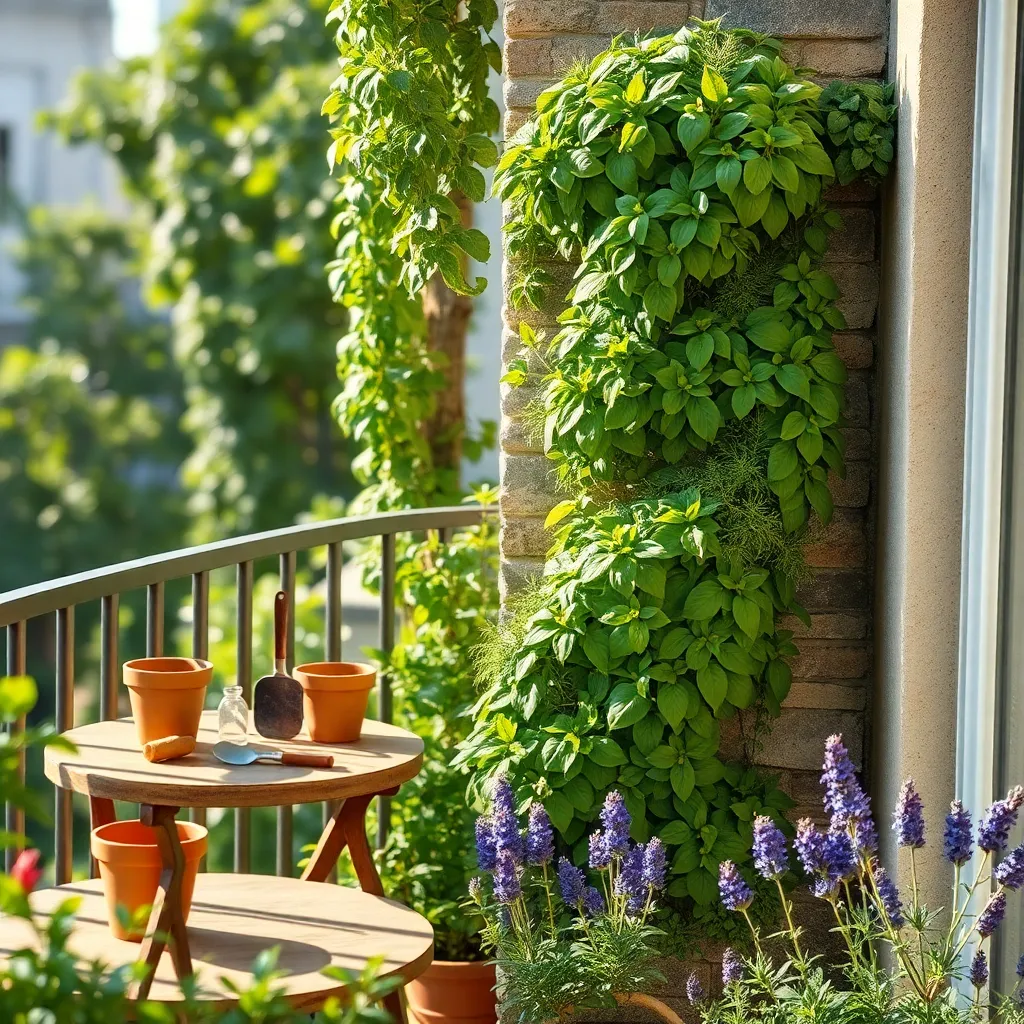
Transform your balcony into a green oasis by creating a herb spiral, a space-efficient way to grow a variety of herbs. This vertical design allows you to maximize limited space while creating a visually appealing focal point.
Start by choosing a location on your balcony that receives at least six hours of sunlight per day. A sunny spot is crucial for most herbs, as they thrive in bright conditions and will produce more flavorful leaves.
Construct the spiral using bricks, stones, or recycled materials, stacking them to form a winding, upward path. This design not only saves space but also provides different microclimates, with the top being drier and the bottom retaining more moisture.
Fill the spiral with a well-draining potting mix, enriched with organic compost to ensure your herbs receive essential nutrients. Herbs like rosemary and thyme prefer the drier, upper levels, while basil and mint benefit from the more moist, lower sections.
Water your herb spiral regularly, aiming for consistency but avoiding overwatering, which can lead to root rot. A general rule is to water when the top inch of soil feels dry to the touch, adjusting for seasonal changes and specific plant needs.
Advanced gardeners can experiment with companion planting within the spiral, pairing herbs that grow well together to enhance growth and flavor. For example, parsley can be planted next to basil to deter pests naturally, promoting healthier plants.
Use Tiered Shelving for Pots
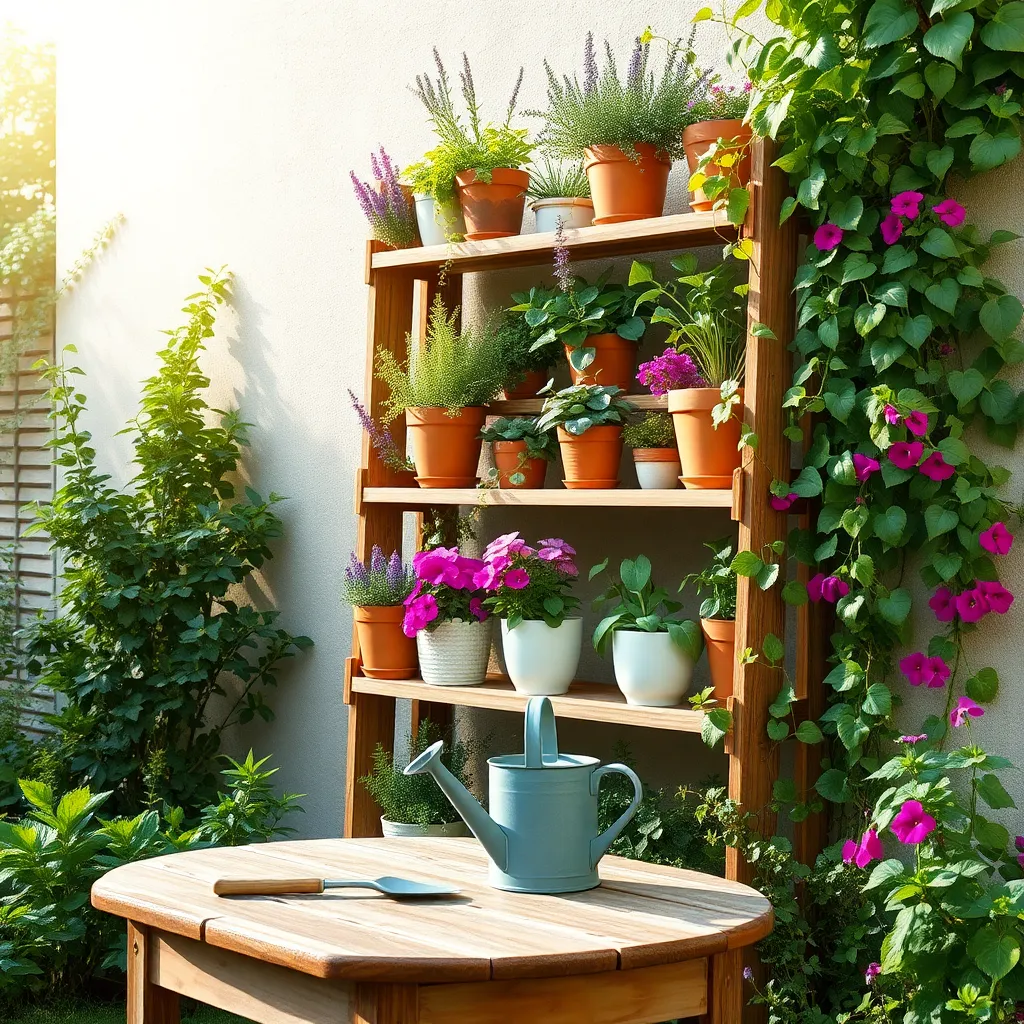
Tiered shelving is a fantastic solution for maximizing vertical space in your garden, especially when floor space is limited. By arranging pots on multiple levels, you can create a lush, layered effect that brings visual interest and variety to your garden area.
To get started, choose a sturdy shelf that can withstand outdoor conditions and weight from the pots. Opt for materials like treated wood or metal that can endure the elements while supporting the weight of multiple plants.
When selecting plants for your tiered shelves, consider those that thrive in similar light and moisture conditions. Herbs like basil, thyme, and parsley are excellent choices for sunny spots, while ferns and hostas are better suited for shaded areas.
For best results, use high-quality potting soil that offers good drainage to prevent root rot, and water your plants according to their specific needs. A general rule is to water when the top inch of soil feels dry, but always adjust based on each plant’s requirements.
Advanced gardeners can experiment with different pot sizes and shapes to create a dynamic display. Consider adding trailing plants like ivy or petunias to the top shelves to cascade down, adding movement and depth to your arrangement.
Install Rail Planters on Balconies
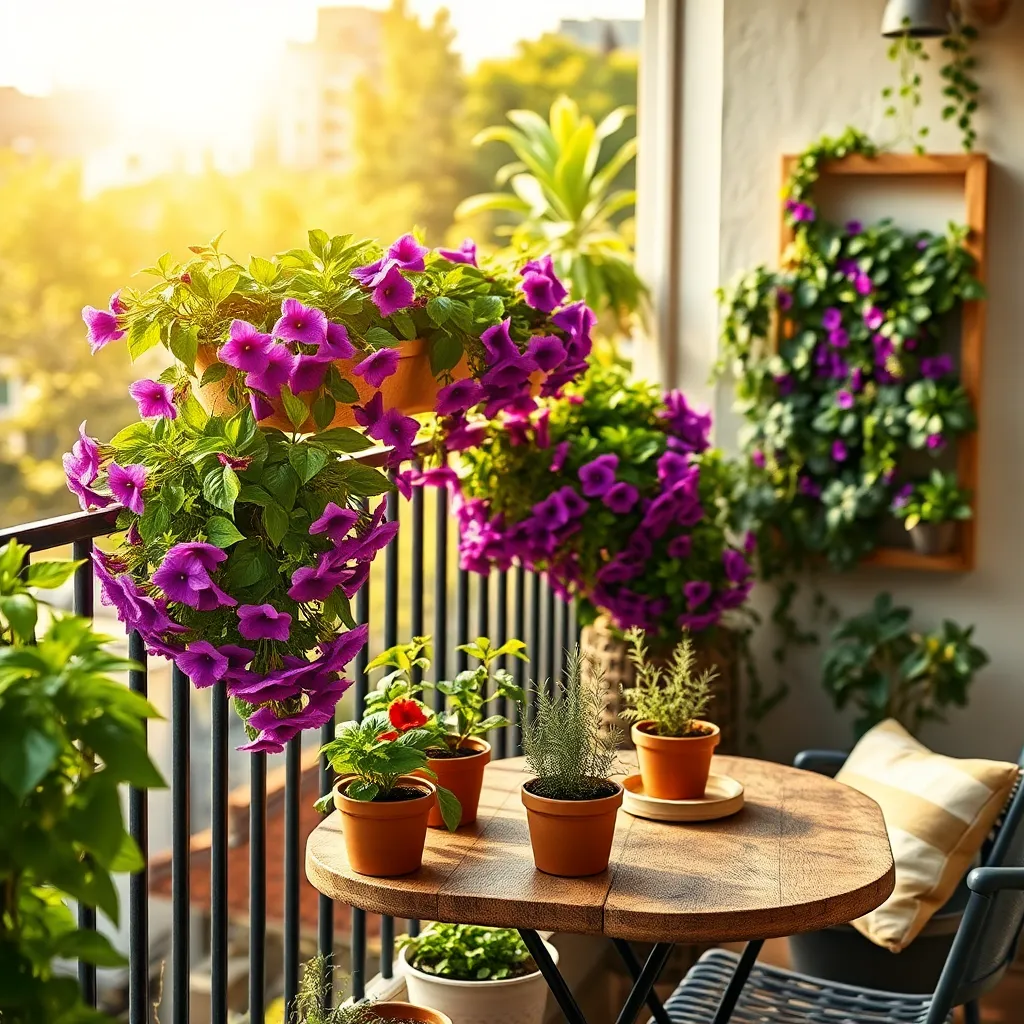
Rail planters are an excellent way to maximize gardening space on balconies, providing a vibrant display without taking up floor space. These planters can be easily attached to balcony railings, allowing you to grow a variety of plants right at eye level.
When choosing plants for rail planters, consider sun-loving varieties like petunias, geraniums, or herbs such as basil and thyme. Ensure your plants receive adequate sunlight by positioning the planters on a railing that gets at least 4-6 hours of sun per day.
It’s crucial to select the right soil for your rail planters, opting for a high-quality potting mix that retains moisture while providing good drainage. Consider adding a slow-release fertilizer to the soil mix to give your plants a steady supply of nutrients.
Watering frequency will depend on your plant choices and local climate, but generally, aim to keep the soil consistently moist without being waterlogged. During hotter months, you might need to water daily, especially if your balcony is exposed to direct sunlight for extended periods.
Opt for Multi-Purpose Furniture
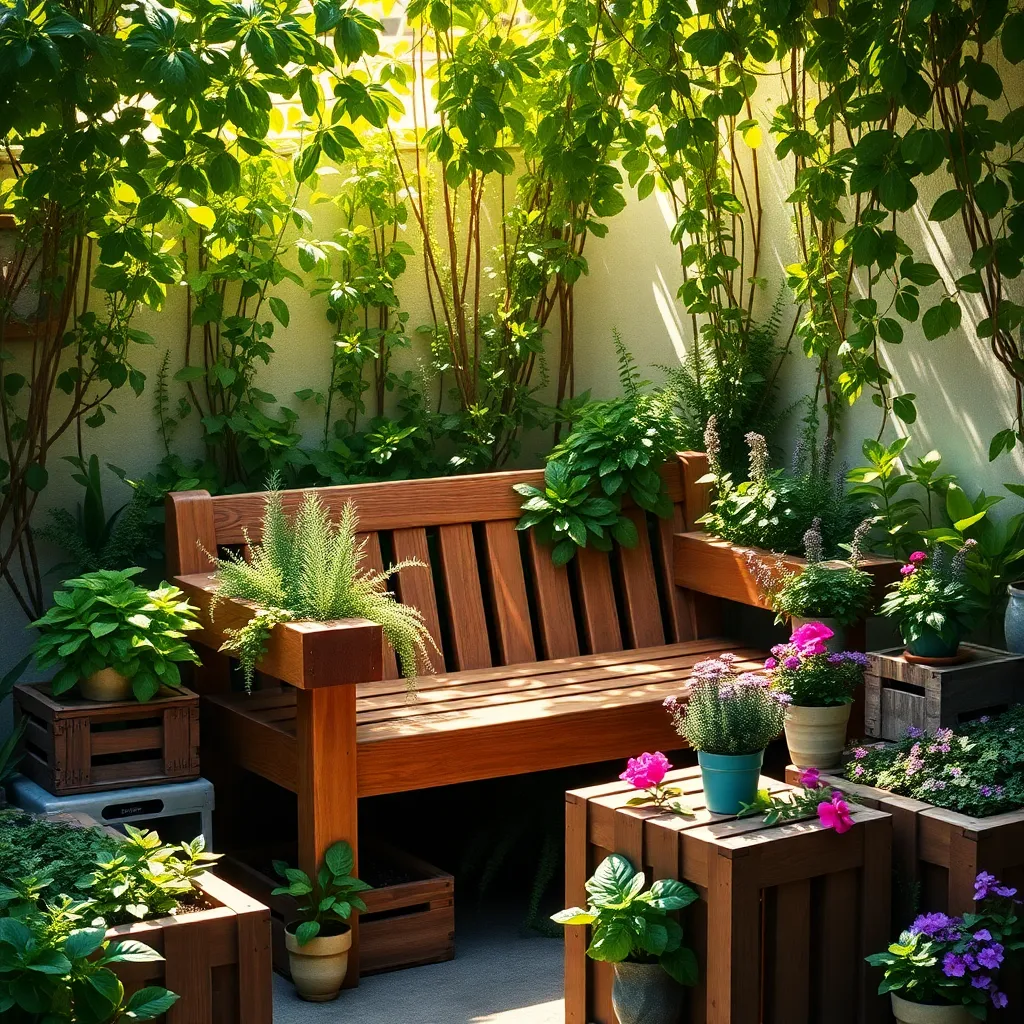
In a small garden, every piece of furniture can serve more than one purpose. Consider using a bench with built-in planters on either side, allowing you to cultivate herbs or flowers that thrive in partial shade while providing a cozy seating area.
Look for tables with storage options underneath where you can keep gardening tools, pots, or fertilizers within easy reach. This not only saves space but also keeps your gardening essentials organized and protected from the elements.
For those who love vertical gardening, choose furniture with trellis backs. This design allows you to grow climbing plants like clematis or sweet peas, which can provide color and fragrance, enhancing your garden’s ambiance.
Advanced gardeners might explore modular furniture that can be reconfigured seasonally to accommodate changing needs. During the growing season, these pieces can be rearranged to maximize sunlight exposure for your plants, ensuring optimal growth.
Build a Compact Raised Bed
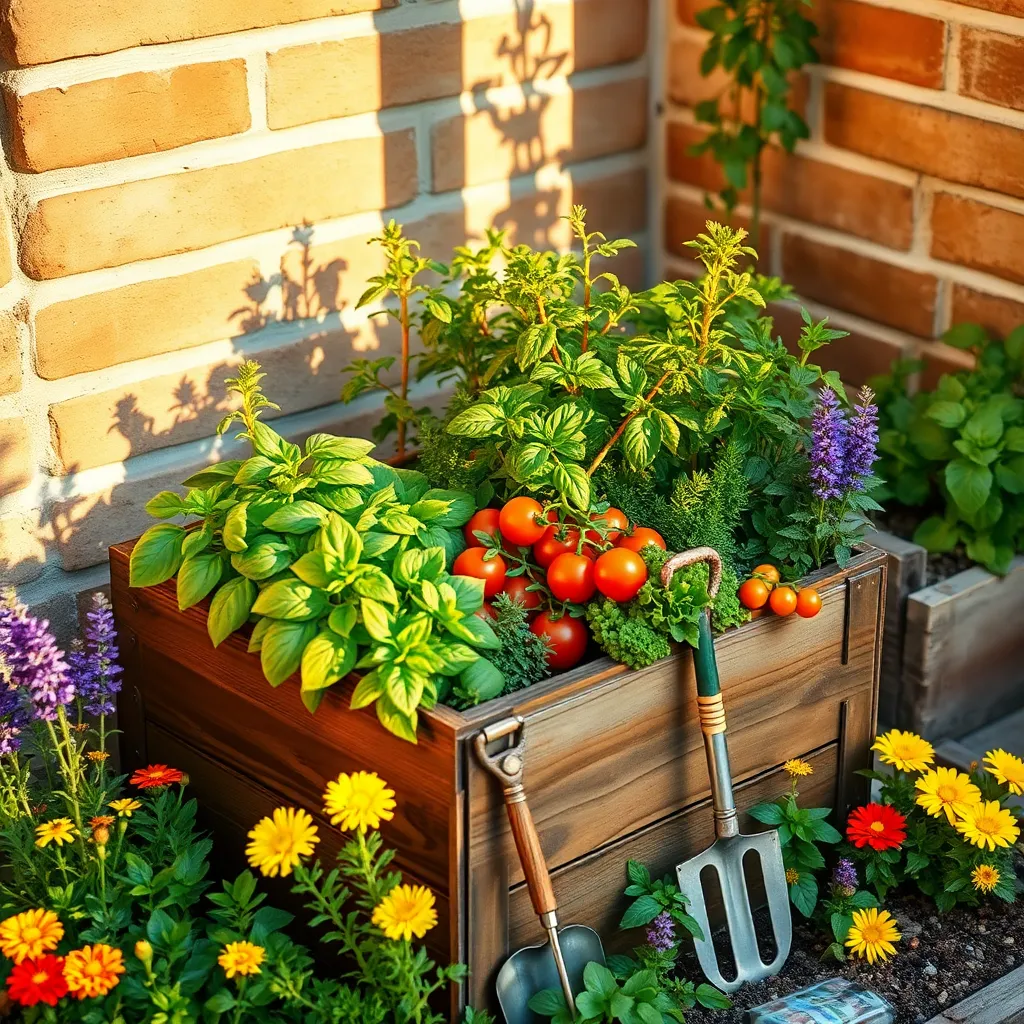
Building a compact raised bed is a great way to maximize your gardening space. This method allows you to grow a variety of plants in a small area, ideal for both urban and suburban settings.
Start by selecting materials such as cedar, pine, or recycled plastic boards, which are durable and environmentally friendly. Ensure your raised bed is at least 6 to 12 inches tall to accommodate a variety of root systems.
Next, fill your raised bed with a mixture of quality topsoil, compost, and a bit of sand for drainage. This combination provides the nutrients and structure your plants need to thrive.
Consider planting a mix of herbs, leafy greens, and compact vegetables, such as radishes or bush beans. These plants often have shallow roots and can thrive in the limited space of a raised bed.
Water your plants regularly, aiming to keep the soil consistently moist but not waterlogged. Installing a simple drip irrigation system can help manage watering efficiently, especially during hotter months.
For an advanced touch, incorporate a trellis at one end of your raised bed to support climbing plants like peas or tomatoes. This vertical space utilization further enhances the productivity of your compact garden area.
Employ Mirrors to Expand Space
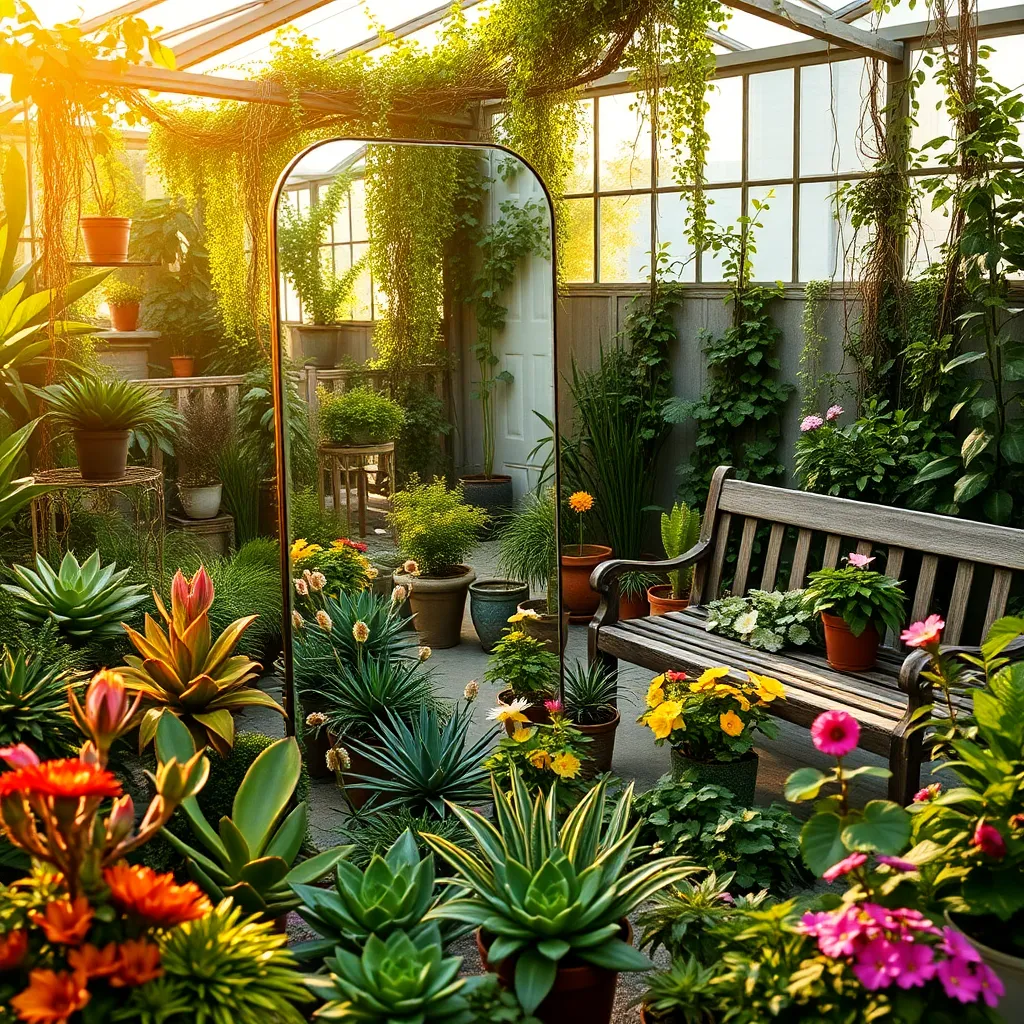
Mirrors can be a clever tool to create the illusion of more space in your garden. By strategically placing a mirror against a wall or fence, you can reflect light and greenery, making the area appear larger and more vibrant.
Consider using weather-resistant mirrors, as they are durable and can withstand outdoor conditions. Ensure that the mirror is positioned to catch sunlight, which will help brighten shaded areas and promote the growth of light-loving plants.
For best results, place mirrors where they reflect attractive features or create a sense of depth. Avoid positioning them in a way that directs harsh sunlight onto delicate plants, as this can cause overheating or scorching.
Experiment with different angles and placements to find the most visually appealing arrangement. Make sure the mirrors are securely fastened to prevent damage from strong winds or other weather conditions.
Conclusion: Growing Success with These Plants
In nurturing relationships, much like cultivating a garden in limited spaces, creativity and intentionality pave the way for growth. This article explored ten key concepts: maximizing vertical spaces, utilizing container gardening, embracing tiered plant stands, incorporating hanging planters, selecting compact plant varieties, creating multifunctional furniture, optimizing balcony and window areas, integrating small water features, using mirrors to enhance space, and fostering a community garden spirit. Each idea mirrors the essence of building strong connections—finding ingenious ways to thrive even within constraints.
To take immediate action, choose one idea and start today; perhaps begin with a simple container garden on your windowsill or explore creating a shared plant space with a loved one. These small steps can profoundly impact your relationship’s vibrancy and depth.
As a forward-looking step, envision a flourishing relationship that grows alongside your garden. Save this article for continued inspiration and reference on your journey to relational success. Remember, nurturing relationships, like gardens, require ongoing care and creativity. Let this be your guide to cultivating a loving and resilient partnership. Save it now, and let your relationship blossom beautifully.

